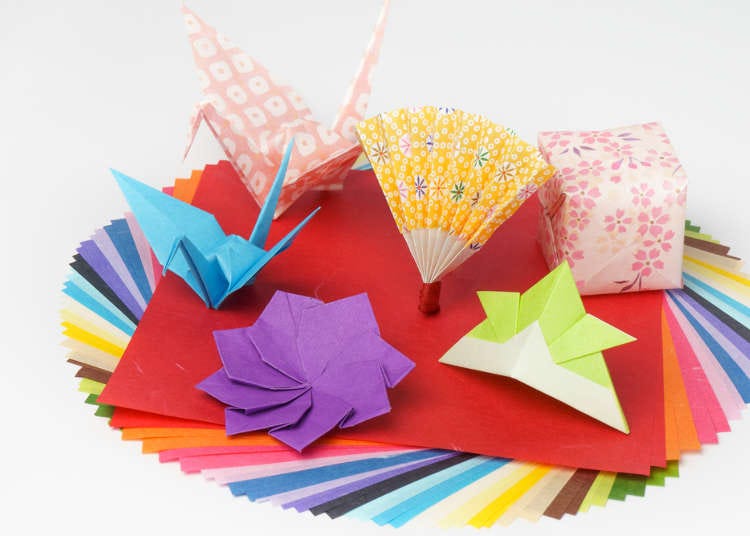
In Japan, the tradition of folding square-shaped paper to make various shapes is known as origami. This form of paper artwork can range from simple to complex. Cranes, hats, animals, flowers, and shuriken are among the most common and traditional origami creations you may come across.
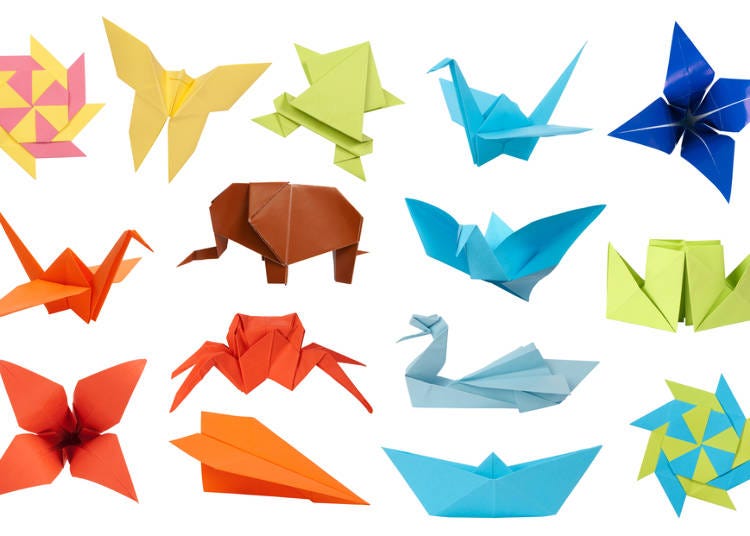
The main keys to remember when doing origami is to fold not only in the correct places, but also in the proper order.
A Skill Learned from Childhood
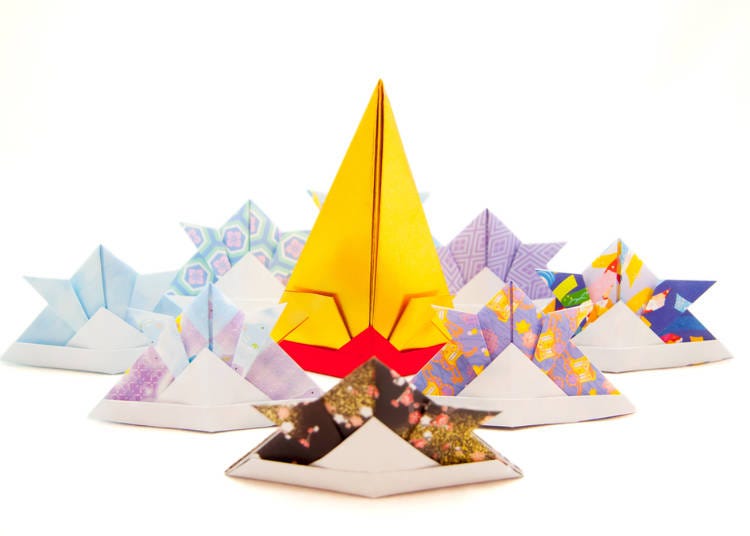
It is very common for Japanese children to learn origami at kindergarten age, starting with simple figures, and moving on to the more complex as they improve their skills. A person who is skilled at origami can make a crane in just a few short minutes, and a kabuto (helmet) in as little as 30 seconds.
Lucky Origami
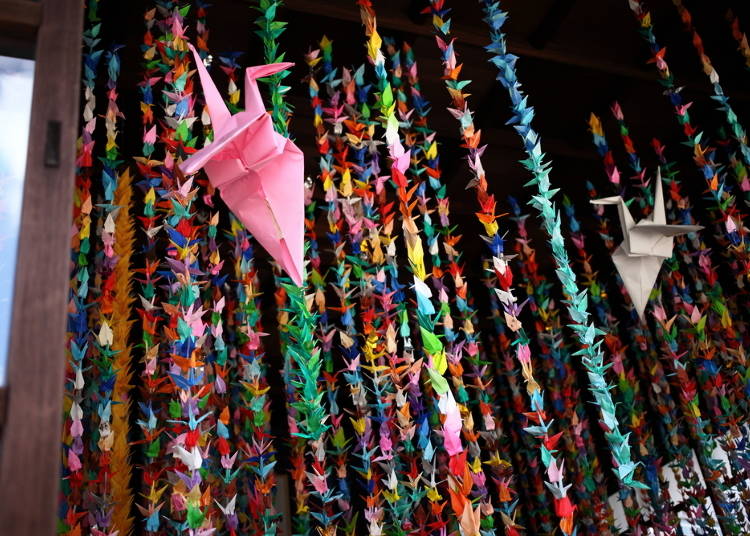
It is believed that string of 1,000 paper cranes is a symbol of longevity. It is also traditional to give this to people who are ill or hospitalized, as a way to wish for their recovery and a long, healthy life.
Chiyogami
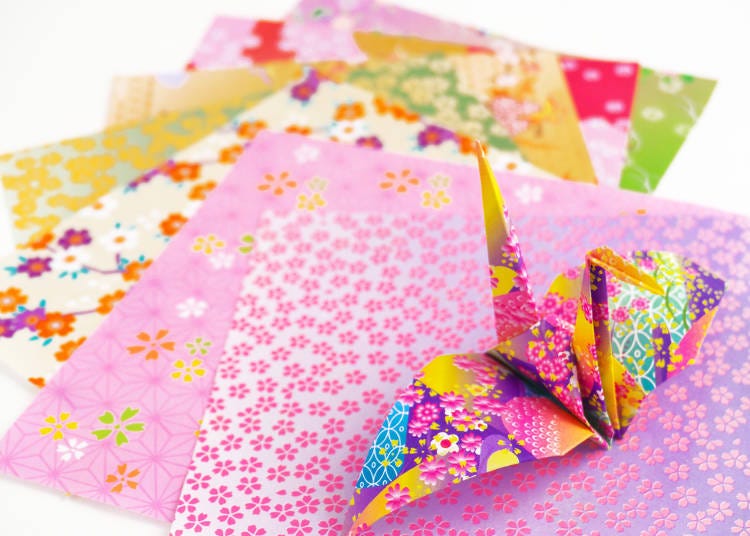
Originally, origami was always folded with a colorful type of Japanese paper called ‘chiyogami.’ During the early days of origami, the craft itself was actually referred to by this name as well. Even today, chiyogami can be seen in souvenir shops in Japan.
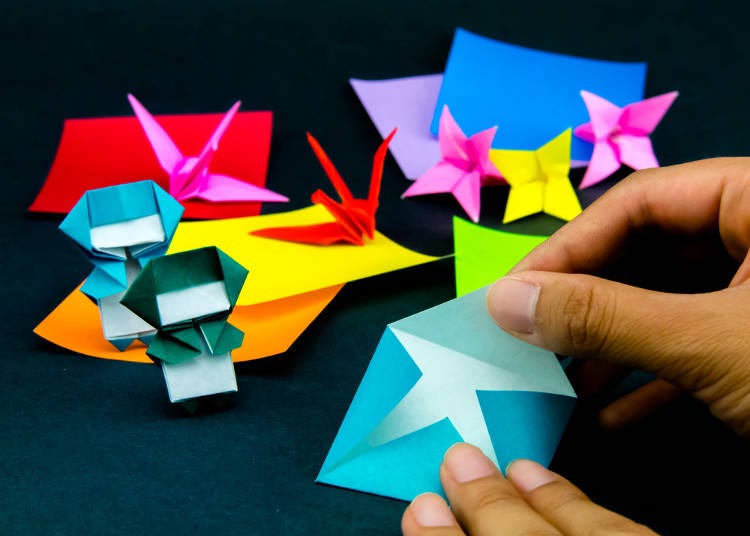
Why not try your hand at making some origami for yourself?
*Prices and options mentioned are subject to change.
*Unless stated otherwise, all prices include tax.
Popular Tours & Activitiess
Recommended places for you
-
Appealing

Shirogane Blue Pond (Aoiike)
Rivers, Lakes & Canyons
Furano / Biei / Sounkyo
-
Appealing

Otaru Canal
Rivers, Lakes & Canyons
Otaru
-

Former Hokkaido Government Office Building (Red Brick Office)
Other Historic Sites
Sapporo / Chitose
-
Appealing

Sapporo Ramen Yokocho
Ramen
Sapporo / Chitose
-

Niseko Village Ski Resort
Skiing & Snowboarding
Niseko / Rusutsu
-
Appealing

Rukku and Uohei
Izakaya
Sapporo / Chitose
-

10 Must-Buy Cosmetics at Don Quijote (2025 Edition)
-
Ad

Walk in the Footsteps of Believers: A 4-Day Pilgrimage Across Goto Islands, Nagasaki Prefecture
by: Yohei Kato
-
Ad

Unraveling the History of the Hidden Christians from Goto Islands, Nagasaki Prefecture, located in Kyushu
by: Yohei Kato
-

See Asakusa and Tokyo Skytree® in a New Light at the "Také Akari" Festival (Winter 2025-2026)
by: Guest Contributor
-

2025 Japan Autumn Color Report: Northeastern Japan Nearing Peak
by: Timothy Sullivan
-

The Ultimate Guide to Mitsui Outlet Parks in Japan (2025 Edition) - Popular Tax-Free Malls & Coupon Info for Travelers
-

Hakodate 2-Day Itinerary for Exploring Japan's Foodie North!
-

8 Best Luxury Hotels in Niseko: Perfect for Any Season
-

Top 6 Best Restaurants in Kutchan Hokkaido - Where to Eat According to Locals
-

6 Surprisingly Cheap Things in Japan
-

8 Unfamiliar (But Totally Normal) Customs in Japan!
-

Stroll Through Sapporo in Our Perfect 1-Day Sapporo Itinerary!
- #best sushi hokkaido
- #things to do hokkaido
- #best ramen sapporo
- #what to bring to japan
- #new years in tokyo
- #what to buy in ameyoko
- #japanese nail trends
- #what to do in odaiba
- #onsen tattoo friendly tokyo
- #daiso
- #best sweets otaru
- #japanese fashion culture
- #best nature furano
- #japanese convenience store snacks
- #best japanese soft drinks
















